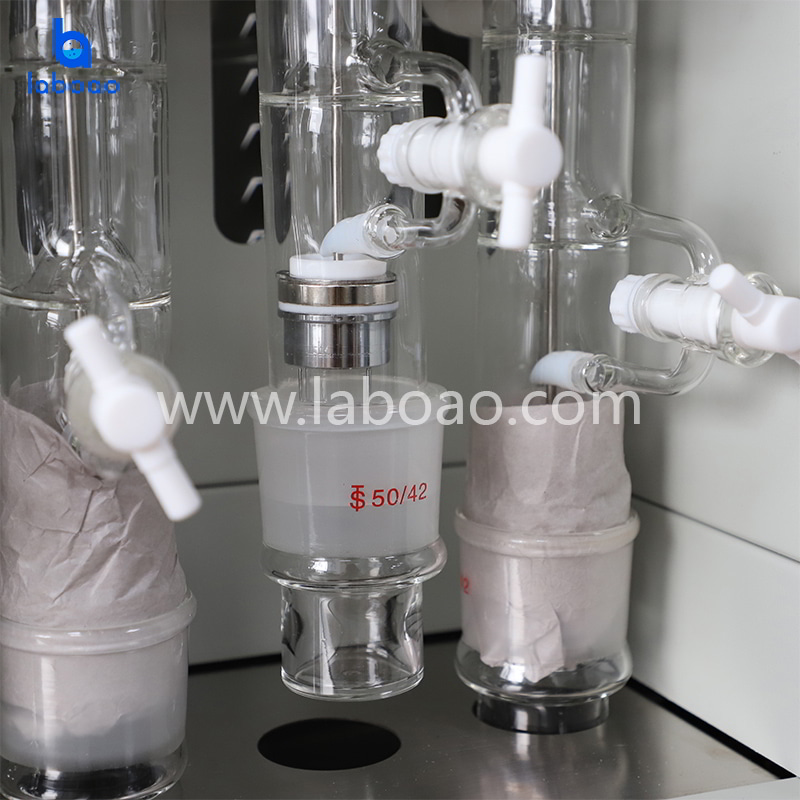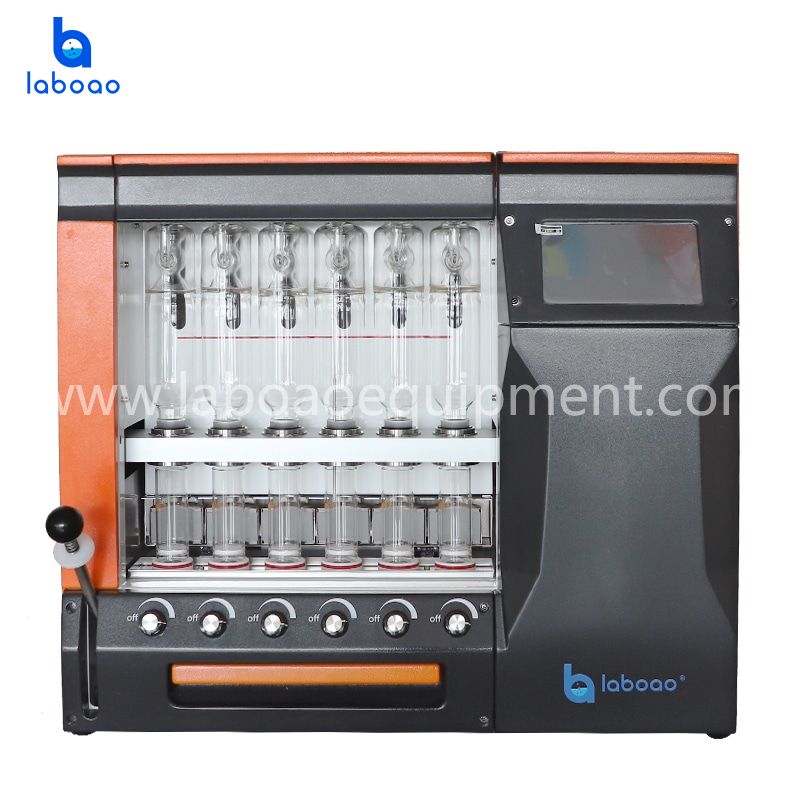FAQS
1. What are the main applications of fat analyzers in those industries?
A: The fat analyzer is based on the Soxhlet extraction principle. The weight content of the sample is determined by gravimetric method. It is mainly used in agriculture, food, environment and industry. It mainly measures the determination of fat in food, oil, feed, grain and other samples. It can also be applied to the extraction and determination of soluble organic compounds in drugs, soils, sludges, detergents and the like.
2. How long does it take to measure a sample?
A: The measurement time is based on different samples, different solvents and experimental environment and experimental conditions. Save 20%-80% of the time compared to traditional methods.
3. How long is the fat analyzer's service life?
A: The design life of the fat analyzer is 10 years, depending on the amount of your own experiment and the daily maintenance.
4. How to ensure the recovery rate of organic solvents?
Answer: The recovery rate of organic solvent mainly depends on the design principle of processing technology and instrument. In order to ensure the recovery rate of instrument reagent, the instrument adopts the patented technology of automatic balance sealing to ensure the sealing of the instrument and ensure the high recovery rate of the solvent.
5. How to prevent the leakage of ether to the laboratory personnel and the environment?
A: The instrument has built-in high-sensitivity ether leak detection device. When the ether leak reaches the threshold of normal occupation, the instrument will automatically alarm to ensure the safety of laboratory personnel.
6. How to ensure the accuracy of the sample results?
A: The accuracy of the fat analyzer results, in addition to the test accuracy of the machine itself, depends on the pre-treatment and post-experimental processing of the sample.
7. What is the difference between a fat analyzer and a Soxhlet extractor?
A: Both the fat analyzer and the Soxhlet extractor are designed and manufactured according to the principle of the international standard Soxhlet extraction method. The two are just different names from different manufacturers, and their working principles are the same.
8. What are the special requirements of the fat analyzer for the laboratory environment?
A: 1. It is necessary to ensure normal laboratory power supply.
2. must ensure that the water supply and drainage of the laboratory is smooth.
3. The instrument is placed at a distance of no more than 1.5m from the tap water source.
4. The laboratory has good ventilation conditions.
9. What is the difference between a fat analyzer and a traditional glass extraction device?
A: 1. The traditional glass extraction device is heated by water bath, with good temperature control accuracy, slow heating rate and small temperature control range. The solvent used in the experiment has certain limitations.
The fat meter is heated by PID precision temperature control aluminum module, which has the advantages of good temperature control precision, wide temperature control range, fast heating rate, and high efficiency.
The user's need for different reagents.
2. The traditional method uses the siphon principle for reflow. The instrument uses timed reflow. Different reflow times can be set according to the sample amount to speed up the extraction of the experiment.
Progress and improve work efficiency.
3. The traditional method can only process one sample at a time, and the fat analyzer can realize batch sample preparation, save experiment time and improve work efficiency.
4. The fat analyzer is controlled by software. The whole experiment process does not require human intervention, and the test results are more accurate.
5. fat analyzer can choose different extraction methods for experiments, convenient for users to choose.
10. Does the test sample need to be wrapped with filter paper?
A: It is recommended to use the filter paper package to increase the service life of the filter paper tube and reduce the experimental cost.
11. Can organic solvents be recycled?
A: Yes. For example, when diethyl ether is used as the extractant, it can be reused by removing the peroxide in the solvent after the recovery, dehydrating, and then re-distilling.
12. What is the difference between metal heating and water bath?
A: 1. The characteristics of the metal bath are: wide temperature control range, up to 300 °C in fat application, and fast heating. At present, the international high-end fat analyzer is basically adopted.
Metal bath heating method.
2. the characteristics of the water bath is: high temperature accuracy, small measurement range, the highest temperature can only reach 100 ° C, the heating rate is slow.
13. How to choose the organic solvent in the experiment?
A: The most commonly used solvents for Soxhlet extraction experiments are diethyl ether and petroleum ether with a boiling range of 30-60 degrees. If there are special requirements, the corresponding organic solvents can be selected for experiment according to different experimental methods within the specified range of the instrument.
14. Do you have to use ether to measure fat content?
A: Fat determination is usually done with ether or petroleum ether. Different reagents can also be selected according to different experiments.
15. Do you need to pre-treat the substance to be tested, and how?
A: The fat analyzer is generally a dried powder sample. The specific sample processing method depends on the different samples. It cannot be said in a nutshell.
16. Can the sample be placed directly on the machine?
A: The fat meter is a test tool for Soxhlet extraction, not a meter. The results of the instrument need to be calculated.
17. How long does it take for the fat analyzer to make 6 samples?
A: The measurement time is based on different samples, different solvents and experimental environment and experimental conditions. Save 20%-80% of the time compared to traditional methods. The fat meter can process 6 samples at a time, so it takes the same amount of time to process six samples and one sample.
18. Can the fat analyzer be used to measure fat in the human body?
A: The fat analyzer can only detect the amount of crude fat in the sample that is tested by Soxhlet extraction. Determination of body fat content is not a method. Therefore, the fat content in the human body cannot be measured.
19. What are the requirements for the fat meter to process the sample in advance?
A: The first thing to ensure in advance is to ensure that the powdered product and the semi-solid sample are dry. The specific sample preparation is also carried out according to the standard of sample processing.
20. Can the fat meter be used for fat determination in liquids, such as milk?
A: The fat meter is a dry powdered product and a semi-solid sample. The fat in milk is determined by the Pap test method. The experimental method is different. The fat analyzer can only be used as one of the processes and cannot be directly detected.
21. Does the fat analyzer require the quality inspection department to identify it?
A: The fat analyzer is not in the product catalogue of the national mandatory verification, and is not a measuring instrument, so it does not require the verification by the quality inspection department.














